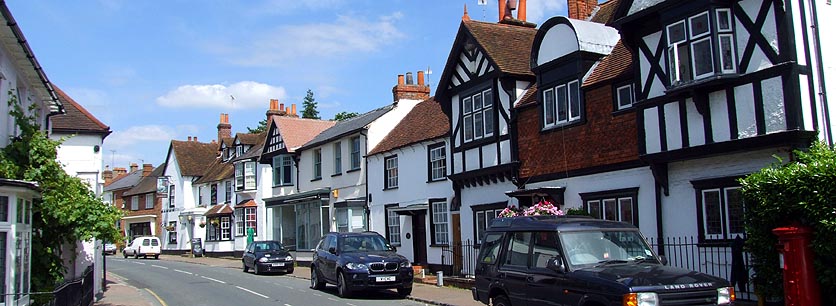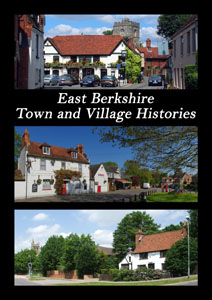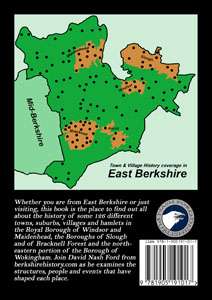 |
 |
||||||||
|
|
Wargrave The name of Wargrave is almost certainly of Ango-Saxon origin, deriving from Weir-Grove: an area of Windsor Forest, near a weir to catch fish on the River Thames. A more romantic story has the Vikings invading this part of the country in the late 9th century and fighting the local Berkshire yeomanry at this spot where they later buried their dead in a mass ‘War-Grave’. The Norsemen were certainly active in the area at that time when they made Reading the headquarters for their conquest of Southern England. Queen Emma, the wife of the Anglo-Viking King Canute, is said to have had a palace at Wargrave and an old legend tells how she gave the manor to the Bishopric of Winchester in thanks for coming through an ‘ordeal by fire’ unscathed after she had been accused of adultery. Wargrave Court, near the church, was the old manor house and dates from the 15th century. Queen Elizabeth I confiscated this from the Bishop of Winchester, after he annoyed her during one of his sermons, and gave it to Henry Neville of Billingbear Park. The manor remained in the family until the 19th century. The Nevilles had divided loyalties during the Civil War but Wargrave, with its growing mercantile interests, seems to have sided with the Parliament. At one point, a foraging party from the royalist garrison at Reading tried to commandeer five cartloads of wheat and a hundred and fifty sheep from Wargrave, but the villagers responded by calling in help from some passing Windsor troopers and the cavaliers were sent packing. A well-known 18th century resident of Wargrave, at Barrymore House off the High Street, was the 7th Earl of Barrymore. He was a notorious gambler, practical joker and general party animal. He made Wargrave the toast of London society in 1791, when he built a magnificent theatre in the village at a cost of over £60,000 (about £4½m today) and installed Delphini of Covent Garden as the resident clown. King George IV was amongst the regular visitors. Unfortunately, Barrymore was accidentally shot while escorting French prisoners to Dover and, because of his vast debts, had to be hurriedly buried under the chancel of Wargrave Church. The parish church is thought to have been founded around AD 900. In the mid-14th century there was also a small chapel dedicated to Corpus Christi to which a recluse, called Alan d’Ellisfield, attached his modest hermitage. Around the same time, in 1362, John Buckingham was consecrated Bishop of Lincoln at Wargrave Church. The ceremony had to take place outside the Lincoln diocese because the Dean and chapter did not approve of the appointment. Wargrave was probably chosen by the Bishop of Salisbury, whose palace was at nearby Sonning, as it was a convenient ferry crossing point over the River Thames which marked the boundary between the dioceses of Salisbury and Lincoln. In 1707, the church was the scene of the whirlwind wedding of Frances Kendrick of Calcot Park and a poor lawyer called Benjamin Child. According to legend, the ‘Berkshire Lady,’ as she was later called, had taken a fancy to this young man at a wedding party. At a masked duel, she had then forced him to choose between fighting and marrying her. He chose the latter. The church is most famous for being one of the more unfortunate victims of the Suffragette Movement. The building was completely gutted by fire during a riot in 1914, the plate and parish registers (dating from 1538) being snatched from the flames. The central area of the village is probably best known for its inns which once served the myriad of coaches travelling between Henley and Reading or Wokingham. The Bull seems to be most famous for its ghostly landlady, who howls in distress as she is evicted from her home. The George and Dragon has a superb, though now rather dark, pub sign encased in glass, which was painted by two Royal Academicians, George Dunlop Leslie and John Evan Hodgson. It is mentioned in Jerome K Jerome’s ‘Three Men in a Boat’. A brighter modern copy has recently been removed. Read more history of
Wargrave and other settlements in the parish in David Nash Ford's book, 'East Berkshire Town and Village
Histories'.
|
||||||||
| © Nash Ford Publishing 2001; Revised 2020. All Rights Reserved. | |||||||||





